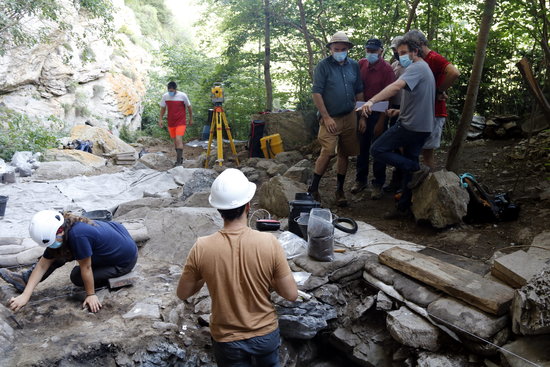3,000-year-old remains of a dozen children discovered in Catalan Pyrenees
Excavations at Roc de les Orenetes reveal Bronze Age bones in "exceptional" condition

An archaeological excavation in the Catalan Pyrenees has unearthed more than a thousand Bronze Age artifacts dating from around 3,000 years ago.
Highlights uncovered at the Roc de les Orenetes site in Queralbs include bone fragments of a dozen children in "exceptional" condition, including two jaws with baby teeth.
A flint arrowhead has also been found during this summer's dig, the fourth discovered at the site to date.
The site is described as a "large carpet of mixed bones" by Carles Tornero, co-director of the dig and a researcher at the Catalan Institute of Human Paleoecology and Social Evolution (IPHES).
The painstaking work involves examining these bones or bone fragments one by one, in order to learn more about the prehistoric burial site, which is located at an altitude of 2,000 meters and difficult to access.
The site was discovered in the 1970s by a young archaeologist called Eudald Carbonell, but work only began last year with the entrance was reopened after remaining shut for almost half a century.
Researchers hope that the dig will provide very valuable information on illnesses, living conditions and causes of death.
They also hope to learn about funeral rites, from fragments of pottery and necklace beads discovered at the site.
The search for the last hunter-gatherers in the Pyrenees
The excavation at Roc de les Orenetes has been carried out in parallel with another, much older site in the area, known as Bauma dels Fadrins. It dates from around 9,000 years ago and is of great historical importance.
Researchers say the area was home to the last prehistoric hunter-gatherers in Catalonia, and it is a "key" site for understanding the transition between the last foraging societies and the first farmers of the Pyrenees.
The site was discovered last year with a first excavation bringing to light plant and animal remains as well as carved stone dating to 6,700BC.
This year, hearths, coals, and structures to store animal remains and tools have been uncovered at Bauma dels Fadrins, confirming the "repeated use" of the stone shelter.